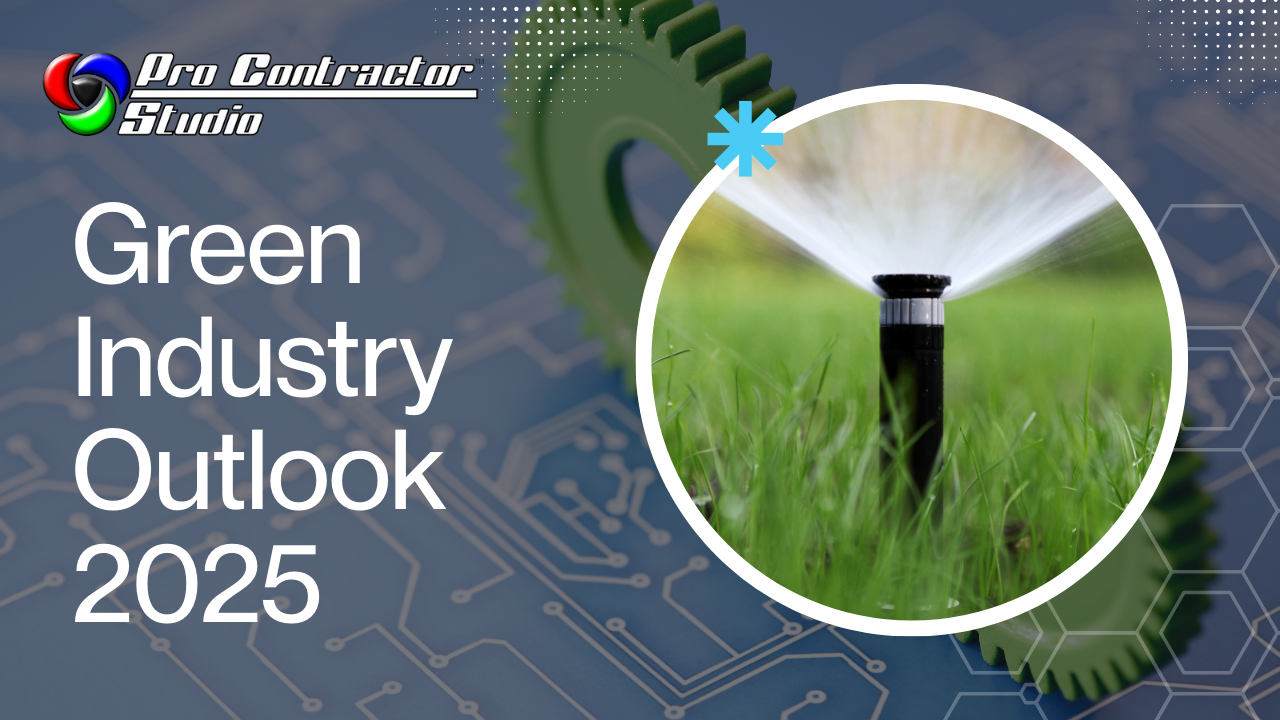Blog Post
-
Green Industry Outlook 2025: Tackling Labor and Water Scarcity with Modern Tools
August 15, 2025

Introduction
The 2025 Green Industry Outlook reveals a double-edged challenge: the landscape and irrigation sectors are growing—but so are concerns around labor shortages and water scarcity. As client demand for outdoor living, eco-friendly spaces, and smart irrigation surges, contractors face mounting pressure to deliver results despite limited resources. The good news? With the right digital tools and strategic planning, these challenges can be turned into opportunities.
Whether you're managing installations or designing residential or commercial landscapes, adapting to these trends is essential. Tools like Pro Contractor Studio, landscape irrigation design software, and site plan software are helping contractors stay ahead in an increasingly complex market.
1. Aging Labor Force and Talent Gaps
A recurring theme in the 2025 Outlook is the aging workforce. Many skilled professionals are retiring, leaving a gap that younger generations are slow to fill. Meanwhile, contractors are facing:
- Increased competition for qualified labor
- Delays in project timelines
- Rising labor costs
Pro contractor studio and landscaping software help fill the gap by reducing manual work, speeding up design and estimating, and allowing fewer workers to handle more projects efficiently.
2. Water Scarcity Is Shaping Landscape Strategy
The second major challenge is water scarcity, driven by climate change, population growth, and stricter regulations. As irrigation becomes more regulated, the demand for water-efficient landscape design and smart irrigation systems is growing rapidly.
Professionals are turning to:
- Irrigation design software to calculate zones, flow rates, and optimal coverage
- Sprinkler design tools that prioritize low-flow heads and drip systems
- Irrigation software to develop systems that align with WaterSense and state mandates
These solutions help contractors comply with evolving laws while delivering beautiful, sustainable landscapes.
3. Leveraging Technology to Stay Competitive
Modern landscape firms are leaning heavily on landscape design software, lawn irrigation design tools, and drainage design software to work smarter—not harder.
Key advantages include:
- Faster turnaround on bids and proposals
- Real-time plan adjustments for clients
- Integrated irrigation and site planning in a single workflow
By combining design and project management in tools like Pro Contractor Studio, firms can improve efficiency, reduce errors, and remain competitive even with leaner teams.
4. Demand for Turnkey Solutions and Professionalism
Clients now expect more than a quick install—they want long-term planning, environmental accountability, and visual confidence before a shovel hits the ground.
Contractors offering:
- Digital previews through best landscape design software
- Compliance-ready plans using site plan software
- Fully integrated designs with smart irrigation and drainage systems
...are positioned to win more bids and grow despite workforce limitations.
5. Workforce Development and Upskilling
One of the most urgent industry needs is upskilling. As tech adoption increases, training the next generation of professionals on digital tools is vital.
Encouraging workforce development through:
- Online training programs
- Certification in irrigation and landscape design platforms
- Apprenticeships focused on software and field skills
...will be crucial to bridging the talent gap while promoting long-term sustainability.
Conclusion
The 2025 Green Industry Outlook makes it clear: while the path ahead includes obstacles, it’s also full of opportunity. Contractors that invest in modern landscape and irrigation software—from Pro Contractor Studio to sprinkler design tools—will be better prepared to adapt, compete, and lead in a changing environment.
By embracing innovation, training talent, and focusing on efficiency, the green industry can thrive even in the face of labor and water limitations.